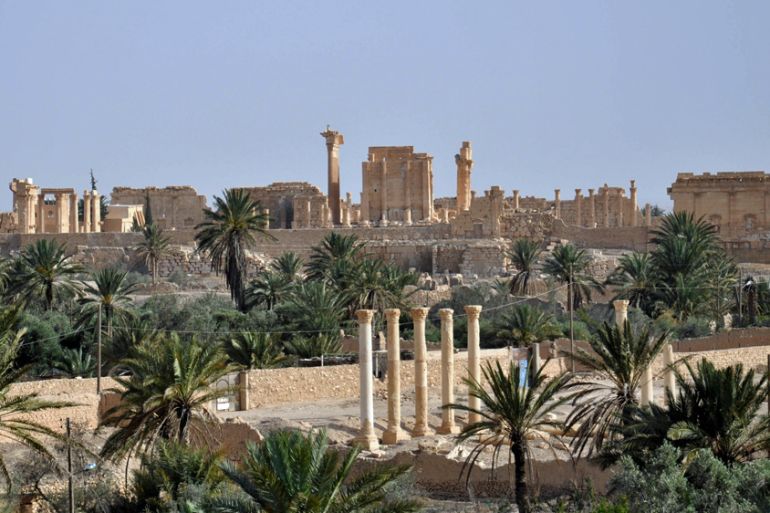Reports: ISIL seizes gas fields near Syria’s Palmyra
Monitor says fields were vital for generation of electricity for areas under government’s control near ancient city.

The Islamic State of Iraq and the Levant (ISIL) group has seized two gas fields northeast of Syria’s ancient Palmyra, a day after firing rockets into the city and killing five people, reports say.
The Al-Hail and Arak gas fields, which were captured by ISIL on Monday, are 40km and 25km respectively from Palmyra, the reports said.
Keep reading
list of 4 itemsAustin confirms Russians deployed to airbase housing US military in Niger
What’s next as ‘heavy-handed’ US negotiates pullout from Niger?
Putin says ‘radical Islamists’ behind Moscow concert hall attack
Everyone is holed up at home, people are afraid of going out.
They were vital for the Syrian government’s generation of electricity for areas under its control, the UK-based Syrian Observatory for Human Rights said.
ISIL fired a barrage of rockets on residential neighbourhoods in the city of Palmyra on Sunday night, killing five civilians including two children, the Syrian Observatory said.
“At least five civilians, including two children, were killed Sunday night when IS fired rockets on numerous neighbourhoods in Tadmur,” the monitor said, using the Arabic name for the city.
“It’s the first time that ISIL has fired so many rockets on the city,” Rami Abdel Rahman, head of the Syrian Observatory, said.
The monitor’s reports could not be independently verified by Al Jazeera.
Deadly clashes have continued on Palmyra’s outskirts since ISIL launched an offensive on May 13 to capture the 2,000-year-old world heritage site nicknamed The Pearl of the Desert.
Since then, at least 364 people, including fighters from both sides and 62 civilians, have been killed in battles.
Located in central Homs province, Palmyra lies 210 km northeast of Damascus in desert that stretches to the Iraqi frontier to the east.
Military situation
ISIL seized most of Palmyra’s north on Saturday, but were pushed out by government troops less than 24 hours later.
“The military situation is under control in the city, but the clashes are ongoing north and northwest of it,” said Talal Barazi, the governor of Homs.
|
|
Speaking to AFP news agency by phone from Palmyra, Khalil al-Hariri, head of the local museum, said: “Everyone is holed up at home, people are afraid of going out.”
According to Mamoun Abdulkarim, Syrian antiquities director, two rockets on Sunday hit the garden of Palmyra’s museum which housed statues, sarcophagi and other well-preserved artefacts, without causing any damage.
“The museum was emptied a few weeks ago, and the main objects were transferred to secret safe spaces,” he told AFP.
Nevertheless, “there are still pieces that we could not transport because they are fixed on the wall”, Abdulkarim said.
Abdulkarim, who had called on the international community to prevent a “catastrophe” in Palmyra, said he remained worried about the “ancient city, especially its sculpted sarcophagi”.
Since Saturday, ISIL has been firmly entrenched 1km from Palmyra’s archaeological treasures, including colonnaded alleys and elaborate tombs southwest of the city.
Fears that ISIL would destroy the beautiful artefacts spurred urgent calls from UNESCO for international action.